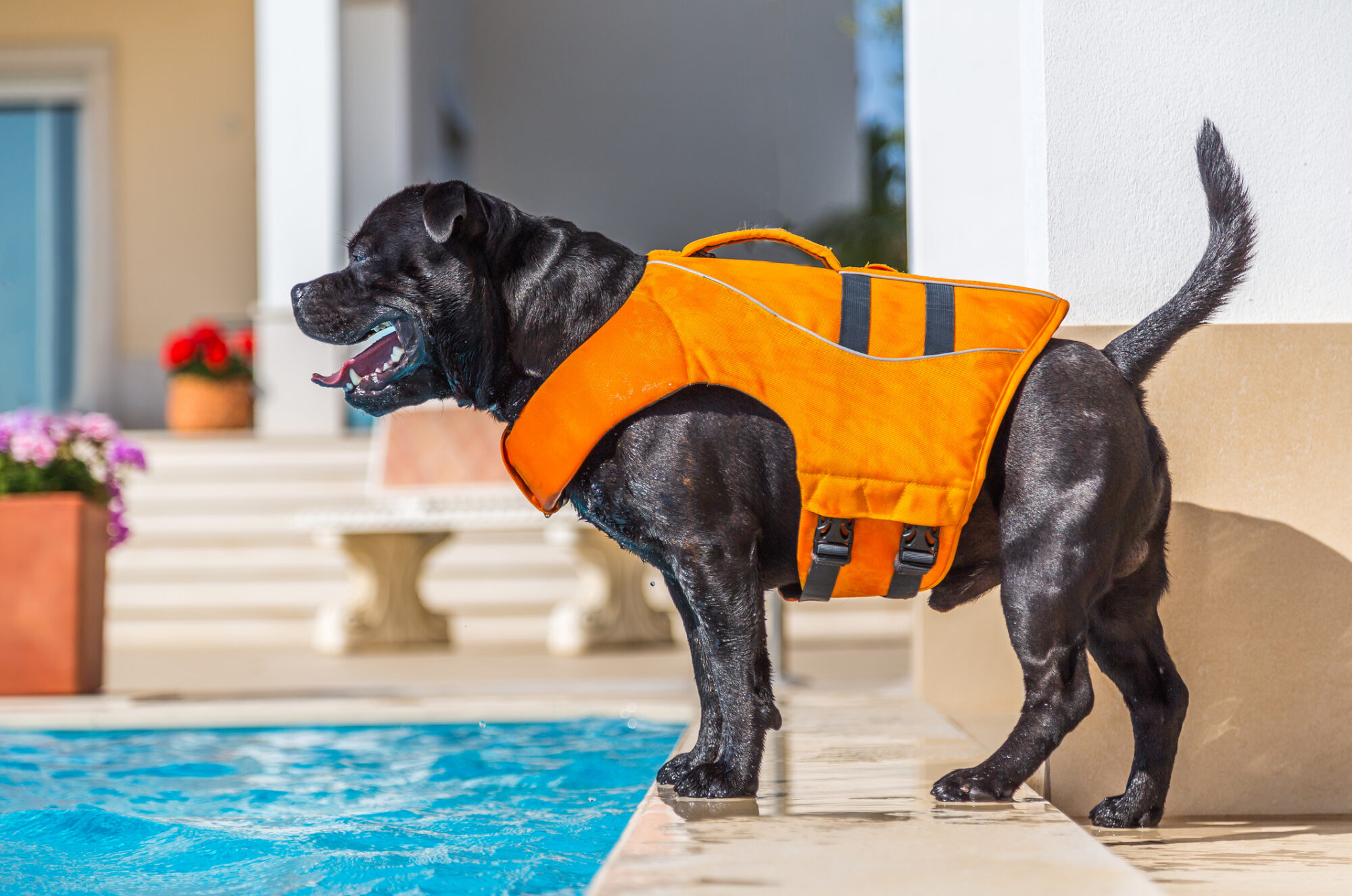Swimming Pool Safety Tips for Pets

When the temperatures rise, there’s nothing better than cooling off with a refreshing dip in the pool. For many pets, the water is just as tempting as it is for the rest of the family. At Sunrise Boulevard Animal Hospital, we know how much joy pets bring to summer activities—but we also know that pools can pose serious risks without the proper precautions.
Here are practical swimming pool safety tips to help you protect your pet while enjoying the season together.
Not All Pets Are Natural Swimmers
Although some dogs seem born to swim, others struggle in the water due to their body type, age, or underlying health conditions. Breeds with short legs or flat faces, such as bulldogs or pugs, may find swimming difficult or even dangerous. And while cats are generally less interested in pool time, some may explore out of curiosity.
Before allowing your pet near the water, consider their physical abilities and temperament. Introduce them to the pool slowly, and always prioritize their comfort and safety.
Never Leave Pets Unattended
Supervision is the most important rule of pool safety. Even experienced swimmers can get tired, disoriented, or startled. Always keep an eye on your pet while they’re near or in the water, and don’t allow access to the pool when no one is around.
Safety features like pet-proof fencing or a sturdy pool cover can prevent accidents when the pool is not in use.
Teach an Exit Strategy
If your pet does enter the pool—intentionally or not—it’s essential that they know how to get out. Show them where the pool steps are and practice using them until they’re familiar.
For pools without built-in steps or with steep edges, a pet-friendly ramp or floating platform can provide a safe exit point. These tools can be especially helpful for older pets or those with limited mobility.
Consider a Life Vest
A properly-fitted pet life vest can be a worthwhile investment, especially for dogs new to swimming, or those with difficulty staying afloat. Look for vests with reflective trim and a handle across the back, so you can easily guide or lift your pet out of the pool if needed.
Even confident swimmers can benefit from this added layer of protection, especially during longer play sessions.
Avoid Common Pool Hazards
Pool hazards aren’t just about the water. Several surrounding elements can also pose risks. Here are a few key things to watch out for:
- Chlorine and other chemicals: These can irritate your pet’s eyes, skin, and stomach. Rinse your pet with clean water after swimming, and make sure they don’t drink from the pool.
- Slippery surfaces: Wet decking and tile can lead to slips and falls. Consider using mats or grip-friendly surfaces to reduce the chance of injury.
- Inappropriate toys: Avoid small, sinking, or easily destructible toys in the pool area. Choose durable floatable toys made specifically for pets.
By taking a few simple precautions, you can minimize hazards and help your pet enjoy time near the water safely.
Don’t Skip Post-Swim Care
After pool time, rinse your pet thoroughly to remove chlorine or salt. Towel-dry them, especially around the ears and paws, to reduce the risk of infections or skin irritation. And keep an eye out for any signs of discomfort, such as itching, red eyes, or coughing.
Regular grooming and wellness checks can also help keep your pet healthy throughout the summer months. Learn more about summer safety in this blog post.
A Safer Summer Starts Here
Poolside safety is just one part of keeping your pet healthy during the warmer months. If you have questions about summer care or want to make sure your pet is ready for seasonal activities, our veterinarians and staff are here to help. Call us at (916) 726-2334 to schedule an appointment.
